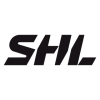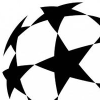Small, but big tips thread
- Thread starter ComradeChris
- Start date
You are using an out of date browser. It may not display this or other websites correctly.
You should upgrade or use an alternative browser.
You should upgrade or use an alternative browser.
ATLhockey437
Registered User
- Jun 6, 2009
- 366
- 0
around 10 min before the game, stickhandle with a golf/tennis ball whatever fits you best and keep your head up the whole time. Warm up the wrist so your not going in with stone cold hands.
Warmup is for the goalies, not you. Shoot in areas that give them a feel of the puck and their angles.
when in doubt, off the glass, make it tough for the other defender to keep it in.
Warmup is for the goalies, not you. Shoot in areas that give them a feel of the puck and their angles.
when in doubt, off the glass, make it tough for the other defender to keep it in.
OkimLom
Registered User
- May 3, 2010
- 15,207
- 6,677
1.Even Bure never skated fast enough to move faster than a puck... passes are thus the best way to get ahead of the play.
2.Last thing a great stickhandler or passer wants to be forced at is going through his opponent.
3.The basis of the offensive is the collapse of the defensive system. Being ahead of the play means you have to be set to attack when your opponent is not in position to defend. Force your opponents to adjust their positioning; even NHL players make positioning the mistake after many movements.
4.Support your teammates! You are strong in unison... make sure you are morally supportive of weaker players, that you're always there to give pass options and ready to move.
5.In fore-checking, it may appear silly to skate when you know the opposition will just turn around you by passing the puck from side to side. But, if you don't cover that ground, you won't be there when they make a silly mistake. Always be ready to jump on the loose puck and always complete your plays - even they seem pointlessly repetitive.
6.If you have to concede space in defense, concede the boards.
7.In most lower levels of the game, you don't need shining skills, just play awareness: look up, they're not so well placed and many force the play.
8.Anatolii Tarasov once said that if a team was to pass the puck 270 times versus only 150 for their opponent, it meant they had 120 more opportunities to work with. Build that sense of team play in your own line-up...
9This one is very important: Have fun!
If you are not the primary forechecker find a guy and keep a sticks length away. If The puck carrier can't find someone to give the puck to they will most likely give it up or turn away, farther away from your net.
Keep guys in front of you don't ever let anybody behind you when in the defensive zone.
Communication.
Another slapper tip - if you're having trouble with shanking shots, or getting off wobbly shots with little power, try closing your blade before impact (instead of trying to strike the ice with your blade perpendicular to the ice, or with it acting like a sand wedge, strike the ice as if you're cupping the puck). Can really help with getting some good power and flex out of the shot.
AlbertaHockey20
Registered User
- Feb 25, 2012
- 164
- 0
Hands out in front - It was mentioned before, but I can not stress it enough. Beyond affecting the ability to stick handle and receive/give passes, it also hinders many important skating manoeuvres. Tight turns, crossovers, and most lateral skating is lead by the shoulders. If your top hand is on your hip it prevents proper core rotation even if you don't have the puck.
You probably have more time than you think you do - As previously mentioned. It is especially important for young and new players to realize. It is important to take the time not to just make the safe play, but the best play.
Stick blade to stick blade defence - This is especially important defending one versus one. It is important to remember when attacking the point as well.
You probably have more time than you think you do - As previously mentioned. It is especially important for young and new players to realize. It is important to take the time not to just make the safe play, but the best play.
Stick blade to stick blade defence - This is especially important defending one versus one. It is important to remember when attacking the point as well.
Frogishi Willow
Registered User
- Apr 11, 2004
- 140
- 4
Another slapper tip - if you're having trouble with shanking shots, or getting off wobbly shots with little power, try closing your blade before impact (instead of trying to strike the ice with your blade perpendicular to the ice, or with it acting like a sand wedge, strike the ice as if you're cupping the puck). Can really help with getting some good power and flex out of the shot.
This is a great tip. I also found out that the puck was too close to me on slapshots. This caused the tip of the blade instead of the mid section of the blade to contact the ice and resulted in a wobbly or shanked shot.
Ozz
Registered User
If you're not going to win a footrace to the puck, don't just stand there and watch the guy blow right past you. Dealt with this all night tonight and nobody ever did anything about their awful choices. If you're not going to get to the puck, or even try, DO get yourself into position to do something defensively. DON'T stand/coast and act like a pylon.
mikitas donut
Flowers of Antimony
If you're not going to win a footrace to the puck, don't just stand there and watch the guy blow right past you. Dealt with this all night tonight and nobody ever did anything about their awful choices. If you're not going to get to the puck, or even try, DO get yourself into position to do something defensively. DON'T stand/coast and act like a pylon.
Oh man, that drives me nuts!
Alexander the Gr8
Registered User
Ranking of the most important aspects of shooting :
1.Knowing when to shoot and what type of shot to use: Don't shoot if you're at the point and you have two guys standing in front of you trying to block the shot. Obviously, don't take a slap shot if you're too close to the net and you don't have the time to wind up, use a snap shot in this case.
2. Accuracy: You're not gonna score if you miss the net or hit the goalie's chest.
3. Quick release/power: If you send a 30 mph muffin, the goalie will laugh at you as puck sails straight into his glove.
1.Knowing when to shoot and what type of shot to use: Don't shoot if you're at the point and you have two guys standing in front of you trying to block the shot. Obviously, don't take a slap shot if you're too close to the net and you don't have the time to wind up, use a snap shot in this case.
2. Accuracy: You're not gonna score if you miss the net or hit the goalie's chest.
3. Quick release/power: If you send a 30 mph muffin, the goalie will laugh at you as puck sails straight into his glove.
ComradeChris
Registered User
- May 15, 2010
- 700
- 5
Watch film of the other team. Know what they're players are going to do before they get it. You're already getting an advantage. Study their patterns.
Caps2Fan
Registered User
- Jan 6, 2014
- 263
- 3
I recently went to a "Weekend Warriors" Adult Camp, and was shown something that was quite enlightening. We were watching videos the coaches took of the goalie practice, and they took the videos from the viewpoint of both the player's eyes AND the puck. The holes you see are not the actual holes that are there. For example, top shelf glove-side often looks wide open from your eyes. From the puck's eyes, that corner is more protected and the actual hole is much lower.
Basically, my tip is imagine you were looking at the net/goalie through the puck's eyes and shoot for those holes.
Basically, my tip is imagine you were looking at the net/goalie through the puck's eyes and shoot for those holes.
damack
Registered User
- Jan 3, 2014
- 402
- 12
I recently went to a "Weekend Warriors" Adult Camp, and was shown something that was quite enlightening. We were watching videos the coaches took of the goalie practice, and they took the videos from the viewpoint of both the player's eyes AND the puck. The holes you see are not the actual holes that are there. For example, top shelf glove-side often looks wide open from your eyes. From the puck's eyes, that corner is more protected and the actual hole is much lower.
Basically, my tip is imagine you were looking at the net/goalie through the puck's eyes and shoot for those holes.
the guys at how to hockey did a nice video of this principle
http://www.youtube.com/watch?v=4Mg4-9l6MYQ&list=TLbNFz9590ghmrryodt6vyVSBEU8oCOUs5
Sureshot
Thumbs up, soldier!
- Apr 7, 2009
- 1,063
- 0
Knowing you have more time than you think is definitely one of the best pieces of advice. I would frequently get the puck and instantly look to dish it, but then started to realize I had time to skate it up to make a better pass. Helped my game immensely.
Kale Makar
Lets go Aves?
Don't fish for the puck, ie two hands on the stick and don't wave at the puckcarrier.
You don't need to have that one huge, blow up hit. Angle them away from your net or just get in their face, if you are right on top of them, they can't do anything.
You don't need to have that one huge, blow up hit. Angle them away from your net or just get in their face, if you are right on top of them, they can't do anything.
Ad
Upcoming events
-
 Skelleftea AIK @ Frolunda HC - Skelleftea leads series 3-2Wagers: 6Staked: $678.00Event closes
Skelleftea AIK @ Frolunda HC - Skelleftea leads series 3-2Wagers: 6Staked: $678.00Event closes- Updated:
-

-
 TO ADVANCE Barcelona vs Paris St-Germain - 2nd leg. 1st leg result: Barcelona 3-2 - CBSWagers: 5Staked: $6,857.00Event closes
TO ADVANCE Barcelona vs Paris St-Germain - 2nd leg. 1st leg result: Barcelona 3-2 - CBSWagers: 5Staked: $6,857.00Event closes- Updated:
-
 TO ADVANCE Dortmund vs Atletico Madrid - 2nd leg. 1st leg result: Atletico Madrid 2-1Wagers: 5Staked: $1,275.00Event closes
TO ADVANCE Dortmund vs Atletico Madrid - 2nd leg. 1st leg result: Atletico Madrid 2-1Wagers: 5Staked: $1,275.00Event closes- Updated:
-

